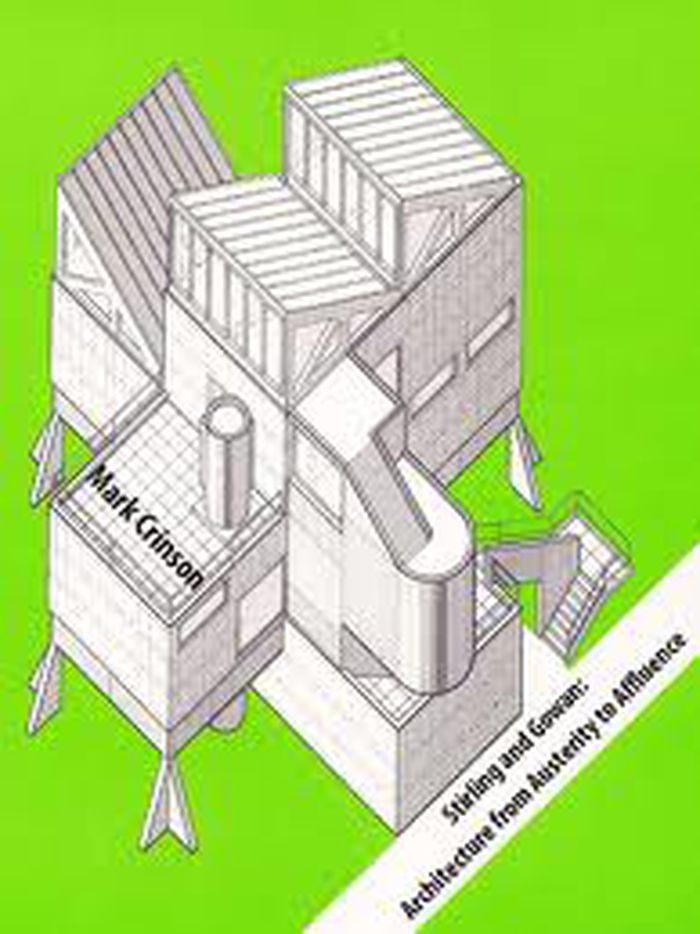$64.00
(disponible sur commande)
Résumé:
From the mid-eighteenth century to the nineteen-twenties, from the birth of the Industrial Revolution to the height of Manchester’s global significance and the beginning of its decline, ''Shock city'' challenges the idea that Paris was the ''capital of the nineteenth century.'' Mark Crinson reorients this issue around the development of industrial production, particularly(...)
Shock city: Image and architecture in industrial Manchester
Actions:
Prix:
$64.00
(disponible sur commande)
Résumé:
From the mid-eighteenth century to the nineteen-twenties, from the birth of the Industrial Revolution to the height of Manchester’s global significance and the beginning of its decline, ''Shock city'' challenges the idea that Paris was the ''capital of the nineteenth century.'' Mark Crinson reorients this issue around the development of industrial production, particularly cotton and its manufacture by means of steam power, offering a fascinating and accessibly written account of how new relations in the industrial economy were manifested through the spaces and representations of the first industrial city. Focusing on Manchester’s mills and warehouses, its main trading institution (the Royal Exchange), its magnificent Gothic Revival Town Hall, and its late Gothic Revival Rylands Library, this book explores these iconic buildings alongside paintings, prints, maps, and photographs of the city throughout the period. Crinson interweaves analysis of buildings and images, urban spaces and new institutions, technology and industrial pollution to show how these were all the products of Manchester’s newly emergent industrial middle classes, who remade the city in their image.
$52.50
(disponible sur commande)
Résumé:
This publication brings together ideas about memory which bear upon the architectural and urban experience. It presents a critical and creative approach to the theorisation of memory, and focuses this burgeoning area of studies on the actual forms of the built environment in the modernist and post-industrial city.
Urban memory : history and amnesia in the modern city
Actions:
Prix:
$52.50
(disponible sur commande)
Résumé:
This publication brings together ideas about memory which bear upon the architectural and urban experience. It presents a critical and creative approach to the theorisation of memory, and focuses this burgeoning area of studies on the actual forms of the built environment in the modernist and post-industrial city.
Théorie de l’urbanisme
$69.95
(disponible en magasin)
Résumé:
The neo-avant-garde and postmodern movements have long been understood in terms of their re-working of modernism and a narrative emphasizing rupture and new beginnings. Compelling continuities between the two, especially in postwar Britain, suggest that a new account is needed. This collection of provocative essays discusses the work of architects and their associates,(...)
Neo-avant-garde and postmodern: Post war architecture in Britain and beyond
Actions:
Prix:
$69.95
(disponible en magasin)
Résumé:
The neo-avant-garde and postmodern movements have long been understood in terms of their re-working of modernism and a narrative emphasizing rupture and new beginnings. Compelling continuities between the two, especially in postwar Britain, suggest that a new account is needed. This collection of provocative essays discusses the work of architects and their associates, including Alice and Peter Smithson, Robert Venturi and Denise Scott Brown, James Stirling, James Gowan, Eduardo Paolozzi, Leon Krier, Allan Greenberg, Reyner Banham, and Charles Jencks, and explores why the debate over postwar modernism was especially vocal in Britain.
Post-modernisme
$79.95
(disponible sur commande)
Résumé:
James Stirling`s partnership with James Gowan between 1956 and 1963 put postwar British architecture on the international map, and their Leicester University Engineering Building became an iconic monument for a new kind of modernism. Mark Crinson's book is the most thoroughly researched study of Stirling and Gowan's partnership to date. Based on extensive interviews(...)
Stirling and Gowan: architecture from austerity to affluence
Actions:
Prix:
$79.95
(disponible sur commande)
Résumé:
James Stirling`s partnership with James Gowan between 1956 and 1963 put postwar British architecture on the international map, and their Leicester University Engineering Building became an iconic monument for a new kind of modernism. Mark Crinson's book is the most thoroughly researched study of Stirling and Gowan's partnership to date. Based on extensive interviews and archival research, Crinson argues that their work was the product of two equally creative partners whose different concerns produced a dynamic aesthetic. He gives an in-depth account of their training and early careers, their relation to key architects and movements of the time, and the commissioning, design, and construction of their work. This critical reassessment dispels previous myths and inaccuracies regarding their partnership and analyzes how ideas about mannerism, modernism, nostalgia, community, consumerism, Victorian cities, and institutional typologies influenced their designs. Stirling and Gowan positions their avant-garde creations within a larger context as creative responses to Britain's postwar deindustrialization and the shift from austerity to affluence.
Architecture, monographies
$71.95
(disponible en magasin)
Résumé:
This title was first published in 2003: Modernist architecture claimed to be the 'international style' but the relationship between modernism and the new dispositions of nations and nationalities which have succeeded the old European empires remains obscure. In this, the first book to examine the interactions between modern architecture, imperialism and post-imperialism,(...)
Modern architecture and the end of empire. 2nd edition
Actions:
Prix:
$71.95
(disponible en magasin)
Résumé:
This title was first published in 2003: Modernist architecture claimed to be the 'international style' but the relationship between modernism and the new dispositions of nations and nationalities which have succeeded the old European empires remains obscure. In this, the first book to examine the interactions between modern architecture, imperialism and post-imperialism, Mark Crinson looks at the architecture of the last years of the British Empire, and during its prolonged dissolution and aftermath. Taking a number of case studies from Britain, Ghana, Hong Kong, Iran, India and Malaysia, he investigates the ambitions of the people who commissioned the buildings, the training and role of architects, and the interaction of the architecture and its changing social and cultural contexts. This book raises questions about the nature of modernism and its roles that look far beyond empire and towards the post-imperial.
L'humain et la ville




